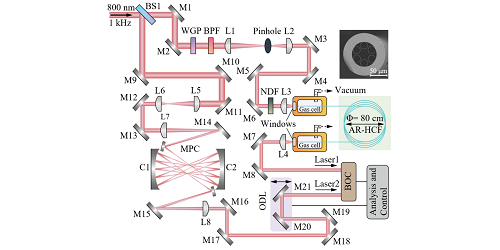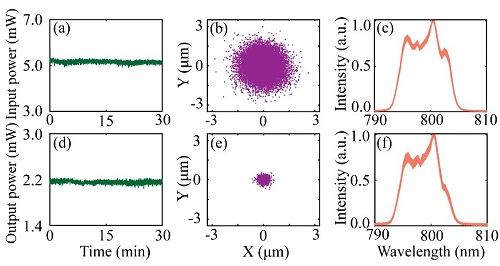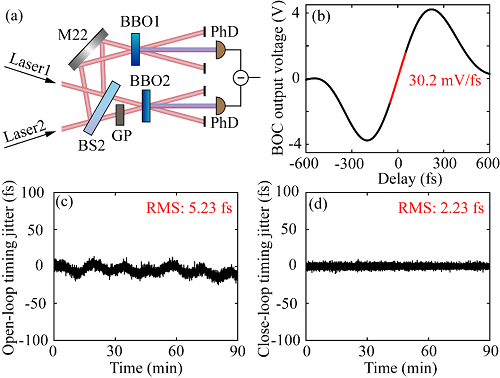Recently, the State Key Laboratory of High Field Laser Physics of the Shanghai Institute of Optics and Fine Mechanics, Chinese Academy of Sciences, the Russell Centre for Advanced Lightwave Science of the Shanghai and Hangzhou Institute of Optics and Fine Mechanics, IFiber (Ningbo) Optoelectronics Technology Co., Ltd., and Wuhan University of Technology have made progress in the research of precision synchronization of ultrashort pulse laser by using anti-resonant hollow-core fibers (AR-HCFs). The research team demonstrated the stable and flexible light delivery of multi-microjoule, sub-200-fs pulses over a ~10-m-long vacuumized AR-HCF, which was successfully used for high-performance pulse synchronization. The relevant research results were published in Optics Letters under the title of "Highly stable, flexible delivery of microjoule-level ultrafast pulses in vacuumized anti-resonant hollow-core fibers for active synchronization".
Timing distribution technique using ultrafast optical pulses plays an important role in modern laser and accelerator facilities. While optical fibers have been widely used for stable and flexible light-wave transmission over long distances, high-performance delivery of microjoule-level, ultrafast pulses over conventional silica-core fiber has proved difficult to realize, mainly limited by the excessive fiber nonlinearity.
The research team reported an active synchronization setup of ultrafast laser pulses in which a 9.6-m length of vacuumized AR-HCF provides the high-performance flexible delivery of microjoule-level, sub-200 fs pulses. With vacuum pumping, the nonlinear spectral broadening effect was utterly suppressed, while the pulse width at the fiber output port decreased slightly due to the waveguide dispersion. We carefully measured in the experiment the power, pointing and spectral stability of the pulse train after AR-HCF delivery, and the results show remarkable performances of ~1% power fluctuation, <1 μrad pointing stability and robust spectral stability. Using a balanced optical cross-correlator (BOC), we measured the long-term timing jitter of this HCF-delivery optical path in the laboratory environment. The root-mean-square (RMS) of the measured timing jitter was ~5.3 fs over 90 minutes, corresponding to a relative optical-path variation of merely 0.2 parts per million which, in the experiment, was successfully suppressed to less than 0.1 parts per million (~2 fs RMS) using an active control setup.
The demonstrated technique of high-energy ultrafast pulse delivery using AR-HCF would drive intense interest from the community of optical-pulse synchronization and timing distribution, while the setup provided may have great application potential in large-scale laser and accelerator facilities.
This work was supported by the National Natural Science Foundation of China, the National Postdoctoral Program for Innovative Talents, the China Postdoctoral Science Foundation, the CAS Project for Young Scientists in Basic Research, the Basic Research Project of Shanghai Science and Technology Innovation Action Plan, and Zhangjiang Laboratory Construction and Operation Project.

Fig. 1. Experimental setup and scanning electron microscopy image of the AR-HCF(Image by SIOM)

Fig. 2. (a), (d) Power stability, (b), (e) pointing stability, and (c), (f) spectral stability of the pulse at the (a)-(c) input and (d)-(f) output of AR-HCF.(Image by SIOM)

Fig. 3. (a) Experimental setup of BOC, (b) optical cross-correlation traces of the BOC, (c) open-loop timing jitter, (d) close-loop timing jitter.(Image by SIOM)